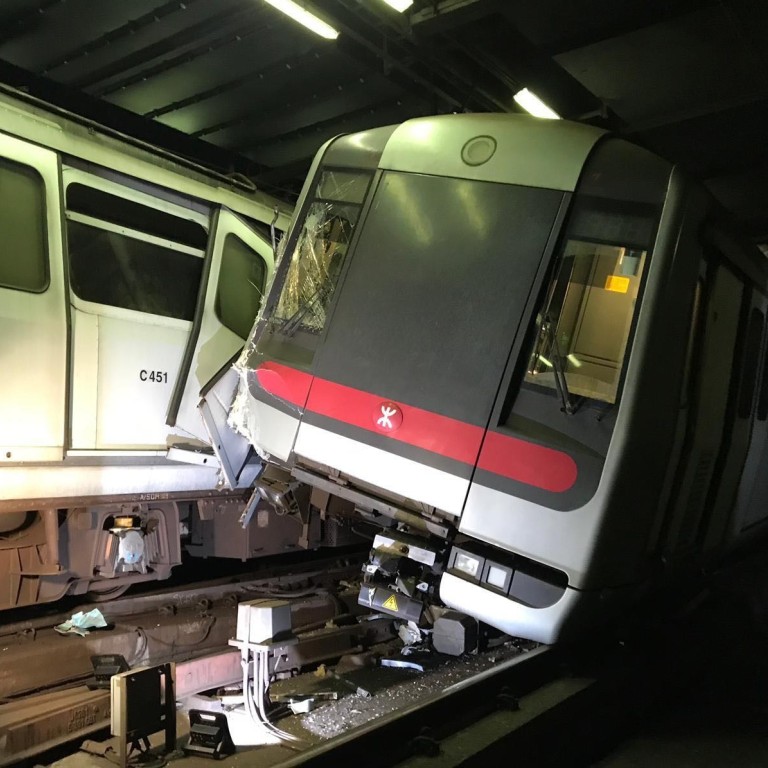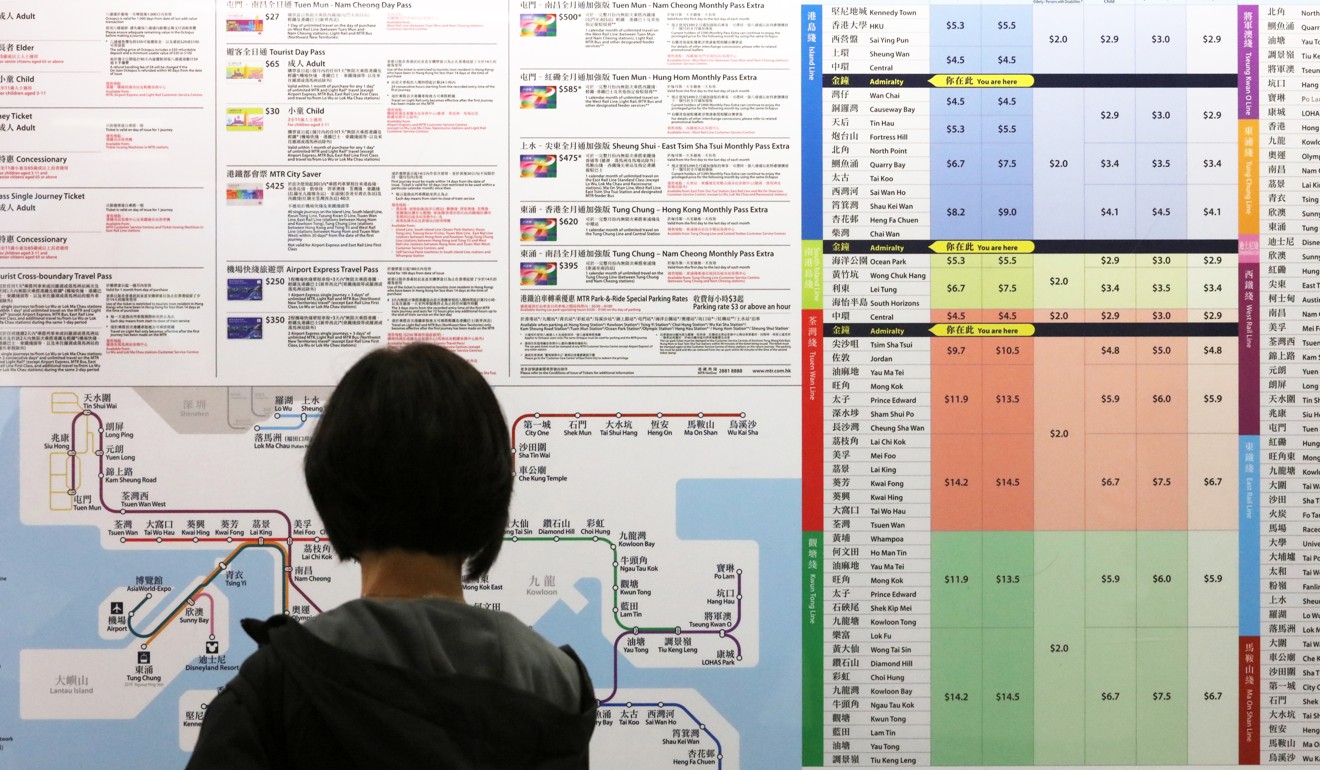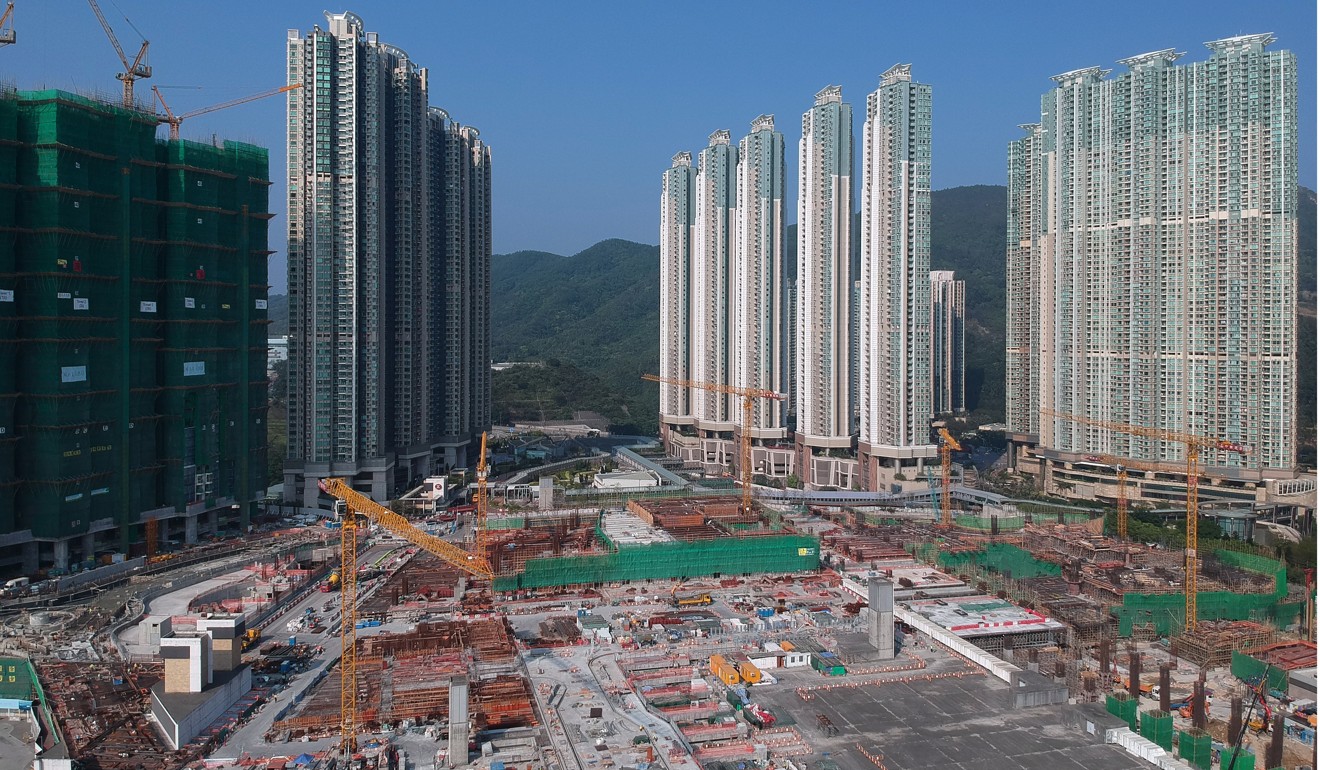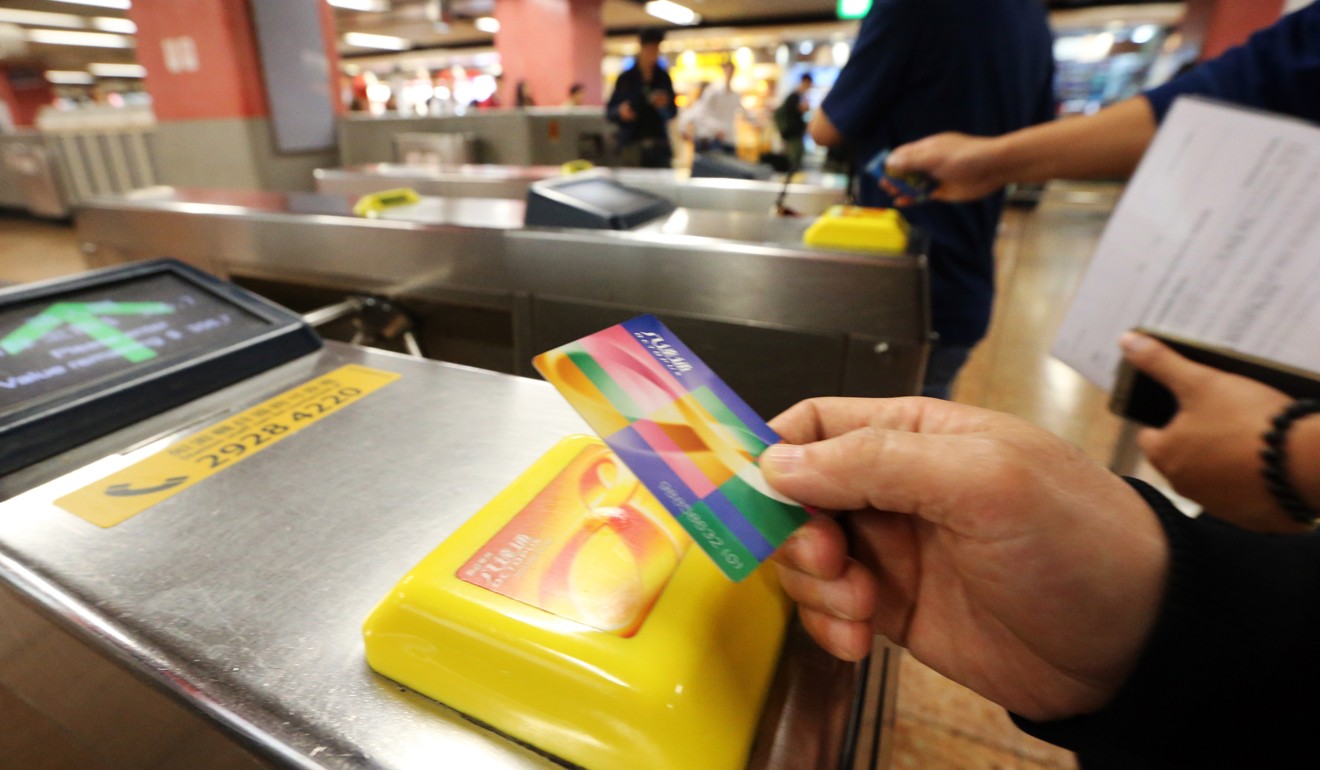
Explainer | Hong Kong’s MTR train system explained: profits, property and punctuality spelt success before the scandals
- The MTR Corporation is in trying times after an accident, construction scandals and service disruptions. How did it get here?
The derailment of a train carriage on Hong Kong’s MTR system last week led to a 48-hour suspension of services in the heart of the central business district.
Two trains collided on the Tsuen Wan line during an overnight trial run of a new HK$3.3 billion (US$420 million) signalling system. A driver was injured and 1,200 support staff were needed to restore services.
The carriage was put back on the track and towed away the following day, and train services returned to normal a few hours later. The crash was the first accident in the MTR’s four-decade history.
Hong Kong’s railway operator attributed the incident to negligence on the part of its Paris-based software supplier, Thales. The crash made headlines around the world, and highlighted the rarity of such problems on a mass transit system often regarded as one of the world’s best for its relatively low fares and 99.9 per cent punctuality. Yet, somehow, many Hongkongers have a love-hate relationship with their train system. City Weekend takes a closer look.

What is the MTR Corporation?
Formed in 1979, the corporation has more than doubled in size over the last 20 years, and is only set to continue expanding. Its 2014 Railway Development Strategy fixed the firm’s sights on seven new projects, producing a total of 34.8km of railway.
MTR Corp to raise prices by 3.3 per cent, as fare-control measure kicks in for first time
Among these, the first phase of the 17km Sha Tin-Central link is expected to open this year, connecting Admiralty and Kowloon to the New Territories.
The MTR Corp currently runs 11 lines as well as a Light Rail network, the Airport Express, and high-speed link to mainland China. About 5.8 million trips are made on any given day on these lines by an estimated five million riders.

Does the MTR Corporation turn a profit?
In 2015 the MTR’s fare recovery ratio, which measures operating costs against ticket prices, was a remarkable 187 per cent – the highest of any train system in the world.
But with fares beginning at just HK$3.50 (45 US cents), how is this economic success possible?
One answer is property. On top of running the rail system, the corporation manages residential and commercial developments near and around MTR stations. With these investments, its annual net profit hit a whopping HK$16.01 billion in 2018 after accounting for revaluations of investment property.
Why is Hong Kong’s MTR hurtling from one disaster to another?
The government holds more than 75 per cent of shares in the MTR Corp, and sells land to the company at knockdown prices in investments that become lucrative once a new station opens.
This “rail and property” development model has been in place since 1980. Today, the MTR oversees 47 residential and commercial properties above and around its 159 stations. Property investments in Hong Kong generated HK$5.05 billion in revenue last year, while similar ventures on the mainland and overseas brought in more than four times that amount.

As one of the world’s least affordable housing markets, property values have consistently been one of Hong Kong’s biggest economic drivers. As a result, any attempt by the MTR to build property generates an immense public response and pushes up the value of homes, businesses and land in the surrounding area.
Hong Kong MTR’s troubles are rooted in its identity crisis
The MTR and its riders: love and hate
With low fares and a consistent 99.9 per cent on-time rate, the MTR is often regarded as the world’s leading public train system. But still some Hongkongers are dissatisfied.
Negative public opinion stems in part from regular increases in fares, which have been on the rise since 2010, despite a fare adjustment mechanism designed to regulate changes. The fare rises are often seen as unjustified against the company’s multibillion-dollar annual revenues.
Critics also complain about what they perceive as the MTR’s focus on profit maximisation, a strategy they say favours private property development and its investors over public housing and the good of the community.
Signalling system blamed for Hong Kong MTR collision was also behind 2017 crash on Singapore MRT

In July last year former transport and housing minister Professor Anthony Cheung Bing-leung said he believed the MTR should no longer be given the exclusive right to build private-sector flats above its new stations.
The government has asked the MTR Corp to be more socially responsible, and urged the company to reallocate 30 per cent of its new residential developments to public housing. So far, two sites in Siu Ho Wan and Tuen Mun have been proposed for this purpose. The two locations could host 22,000 flats.
Hong Kong MTR, hit by train collision, suffers second setback as woman falls on tracks at Kowloon Tong
Fare rises – profit vs people?
The MTR Corp announced a 3.3 per cent increase in fares on Thursday, after net profit fell 4.9 per cent last year. A similar rise in March last year of 3.14 per cent was met with dismay, and sparked a December protest at MTR headquarters organised by the pro-business Liberal Party.
Lawmaker Tommy Cheung Yu-yan argued a company as integral to Hong Kong life as the MTR Corp had a responsibility not to increase the financial burden of city residents.

The rail operator says the increases have been mitigated by a number of promotions and packages offering commuters savings of more than HK$500 million. These include the Monthly Pass Extra, MTR City Saver and Tuen Mun-Nam Cheong Day Pass. A rebate mechanism also deferred changes in ticket prices for six months until January 2.
So are there any other problems with the MTR?
While last week’s derailment was bad, it is by no means the only failure on the part of the MTR in recent years.
Last year the corporation faced a series of scandals over shoddy construction work on the Sha Tin-Central line.
In May it was alleged that contractors had cut corners while building the HK$97.1 billion project. Leighton Contractors (Asia) was accused of covering up shoddy work on new platforms for Hung Hom station.
In October four MTR lines simultaneously experienced unprecedented delays caused by a signalling system. The six-hour disruption caused massive overcrowding at affected stations, and the company tried to make amends by offering half-price fares as compensation.
But only nine days later the MTR faced a second disruption when trains were delayed on the Tseung Kwan O and Kwun Tong lines. Once again, signalling systems were blamed.

